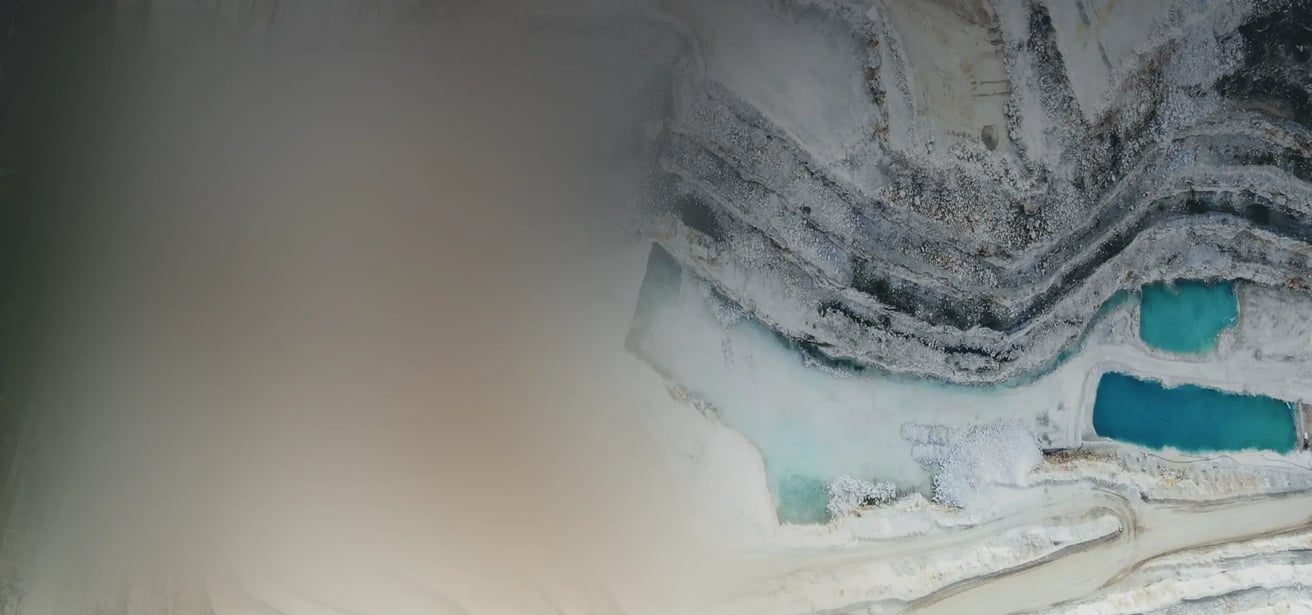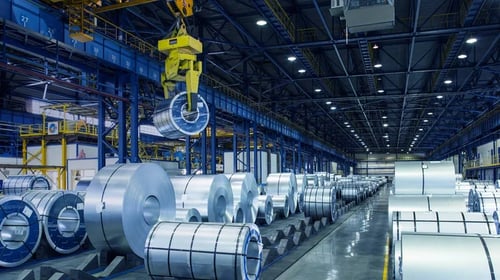
Transform Metals and Mining Operations with SAP Solutions
Manage the entire production cycle within a single IT ecosystem.



Optimize the Full Cycle from Mining to Metal Delivery with SAP
The metals and mining sector is changing due to rising social responsibility, changing environmental regulations, and rapid technical breakthroughs. Businesses can overcome these obstacles by using SAP systems, which offer resources to assist every stage of operations, from the extraction of raw materials to the delivery of finished goods.
SAP helps businesses meet their sustainability objectives, increase efficiency, and adjust to change more quickly. Our company deploys and adapts SAP solutions, streamlining process management, lowering risks, and producing predictable outcomes.
Business Benefits of SAP Solutions for the Metals and Mining Industry
Supply chain transparency
Equipment uptime
Reduced environmental impact
Efficient project management
Informed decision-making
Maximized equipment ROI
Tackling Challenges Across Metals and Mining Subindustries with SAP
- Mining
Improve asset utilization, meet safety standards, and enable real-time operations. - Metal ore extraction
Track ore, plan production, and ensure global compliance. - Coal mining
Control inventory, track costs, and monitor emissions. - Precious metals mining
Secure high-value resources, manage grade control, and report accurately. - Industrial minerals mining
Forecast demand, optimize blending, and coordinate bulk logistics. - Metallurgical processing and smelting
Improve energy efficiency, optimize throughput, and track emissions.
- Steel production and processing
Enable order-driven production, ensure quality control, and improve cost visibility. - Non-ferrous metals production
Trace inputs, manage smelting, and streamline refined outputs. - Foundries
Track molds, reduce scrap, and plan maintenance in casting operations. - Metal fabrication
Control shop floors, calculate job costs, and manage supply chains. - Rolled and extruded metal products
Schedule coils, ensure lot traceability, and manage production tolerances. - Recycling of metals
Manage reverse logistics, sort by grade, and track compliance.
SAP Solutions for the Metals and Mining Industry
Enterprise resource planning
SAP helps metals and mining companies enhance enterprise resource planning processes to improve efficiency and reduce costs through:
- Real-time analytics that provides access to up-to-date insights on inventory, demand, and supply chains.
- Procurement optimization to simplify supplier selection and improve expense transparency.
- Asset performance management tools that help extend equipment lifespan and reduce maintenance costs.
- Profitability and cost analysis for data-driven decision-making in financial departments.
Show more
-
Manage core processes with real-time analytics.
-
Transform and accelerate procurement processes.
-
SAP Asset Performance Management
Develop effective maintenance strategies, improve asset performance, and reduce environmental impact.
-
Perform detailed cost and profitability analysis to optimize financial processes.
Data Analytics and automation
SAP's AI-powered solutions enable mining and metals firms to increase operational efficiency by providing them with tools like:
- System protection analytics to identify suspicious activities and reduce risks associated with unreliable partners.
- AI for procurement that automates supplier selection, optimizes procurement processes, helps cut costs, and mitigates risks.
- Generative AI for transportation to simplify invoice creation, automate document processing, and reduce staff workload.
Show more
-
SAP Business Integrity Screening
Use AI to analyze data and identify potential threats.
-
Apply AI in procurement to streamline operations and minimize risks.
-
Automate the creation and processing of transportation documents.
Sustainability
SAP offers solutions to support sustainable development in metals and mining, enabling companies to:
- Set and track environmental goals to monitor and achieve sustainability objectives.
- Analyze their carbon footprint to decarbonize the entire value chain with precise emissions tracking tools.
- Manage and mitigate environmental risks to prevent incidents, enhance operational safety, and adapt processes to meet sustainability standards.
Show more
-
Monitor and manage key sustainability metrics using data-driven insights.
-
Analyze and reduce your company's carbon footprint with advanced emissions accounting tools.
-
SAP Environmental Management Software
Implement environmental risk management to prevent incidents and improve operational safety.
Raw material supply management
SAP equips metals and mining companies with tools to optimize raw material supply processes, including:
- Resource management tools that help streamline procurement, sales, and risk management to reduce errors and save time.
- Integrated business planning to adapt to changes with supply chain analytics, scenario modeling, and automated alerts.
- Transportation, fleet, and logistics management to improve transportation efficiency, cut costs, and reduce environmental impact.
Show more
-
SAP Commodity Management
Manage critical raw material processes, minimize risks, and optimize operations.
-
Plan for a sustainable future with advanced analytics and forecasting tools.
-
Enhance transportation operations, reduce expenses, and lower environmental impact.
AI & ML Use in the Metals and Mining Industry
Mining and metals operations involve large-scale assets, hazardous environments, and tight regulations. SAP helps manage these systems, whileAI adds speed, risk awareness, and decision support in ways traditional automation can't.
AI is already improving results in areas like:
- Predictive maintenance of heavy machinery using sensor data (SAP Predictive Asset Insights).
- Optimizing ore extraction routes with geological data and AI-driven simulations.
- Monitoring worker safety through video analytics and AI alerts.
- Forecasting commodity prices with market data analysis.
SAP’s AI tools cover much of this, and we help apply them effectively. For additional needs, we develop custom AI — including generative models — that fit your operational context and work seamlessly with your existing systems SAP or otherwise.
How We Can Help

Consulting

Implementation

Integration

Support

Application management
DIGITAL INITIATIVES APPLIED AT EVERY STAGE OF MINING AND PROCESSING

BIG DATA

INTERNET OF THINGS

CYBERSECURITY

ARTIFICIAL INTELLIGENCE

AUGMENTED REALITY
Case Studies

SAP MRS System Optimization for a Steel Manufacturing and Mining Company
LeverX has improved the performance of the customer's current SAP MRS system. The configuration and development done by our team allowed the client to increase labor efficiency and achieve perfect resource planning.

SAP ERP Implementation for a Metals and Mining Company
LeverX contributed to more efficient and transparent sales processes in a large holding of an international metals and mining group.

RISK MANAGEMENT SOFTWARE FOR METAL & MINING
The solution has significantly contributed to the overall improvement of the client's system, aligning with their business objectives and enhancing their operations.
Why LeverX?
Proven track record
Industry experts
SAP partnership
Quality and security
Investment in innovation
Flexibility
How to Succeed with LeverX
- Current processes evaluation: Assess existing business processes and identify the organization's needs.
- Defining technical requirements: Create a detailed specification of the functional and technical needs of the new system.
Discover
- Setting goals and objectives: Establish and agree on the goals to be achieved throughout the project.
- Assembling the project team: Appoint team members and define their roles and responsibilities.
- Project plan development: Create a comprehensive plan that outlines project phases, timelines, resources, and key performance indicators.
- Budget determination: Estimate and approve the budget.
- Specifications preparation: Develop the technical and functional specifications for the development team.
Prepare
- Ensuring business requirements are met: Check that solution aligns with business requirements and project objectives.
- Data validation: Verify the accuracy and compliance of the data.
Explore
- Data migration: Transfer data from existing systems to the new one.
- System configuration: Set up the solution according to requirements and specifications.
- Customization: Develop additional features and modules, if the standard solution does not meet all needs.
- Integrations: Configure solution to work with other IT systems and applications.
Realize
- Testing: Perform functional, integration, regression, and load testing to ensure that all works correctly.
- User training: Organize sessions to help users become familiar with the new system.
Deploy
- System readiness check: Verify that the system is ready for operational use.
- Launch: Officially transition to active use of solution.
- Ongoing support: Continuously monitor solution performance to identify and resolve any issues.
Run
FAQ
How do SAP solutions improve operations in the metals and mining industry?
How much does it cost to implement SAP for metals and mining operations?
Can SAP help reduce environmental impact while maintaining productivity?
How does SAP support raw material supply chain management in mining?
What stages of the mining value chain can SAP digitalize?
Contact Us
What happens next?
-
1
An expert will reach out to you to discuss your specific needs and requirements.
-
2
We'll sign an NDA to ensure any sensitive information is kept secure and confidential.
-
3
We'll work with you to prepare a customized proposal based on the project's scope, timeline, and budget.
years of expertise
projects
professionals
Contact Us
CONTACT US
If you are looking for an SAP Global Strategic Supplier or Technology Partner for your business, fill out the form below, and we will contact you at short notice.